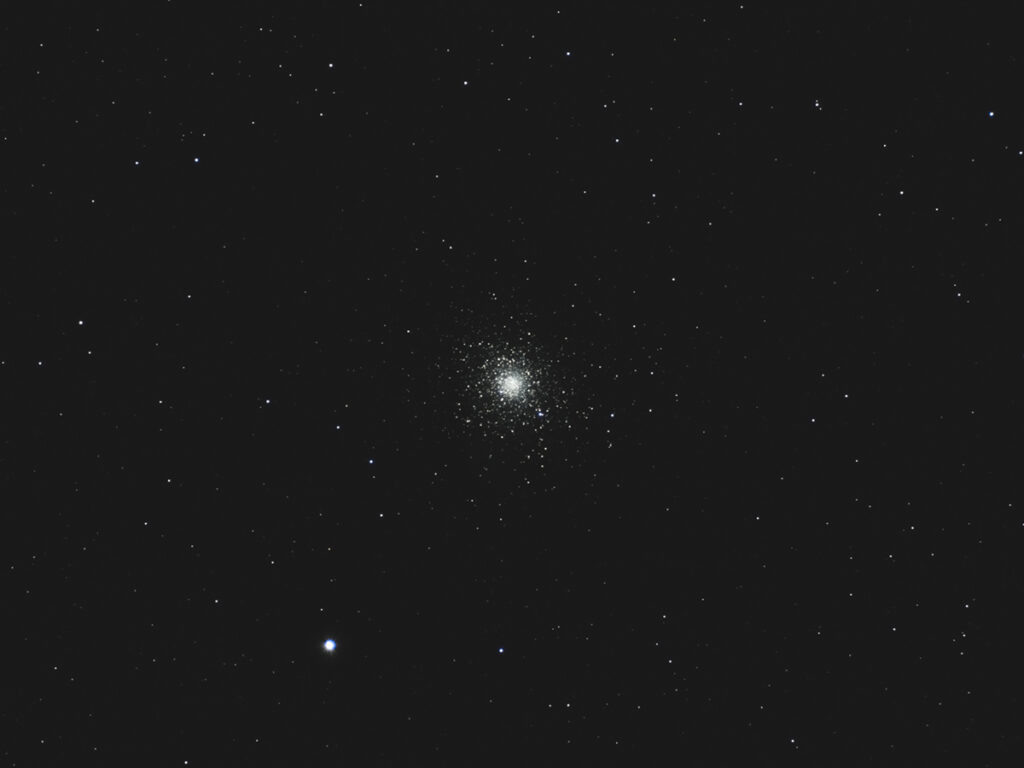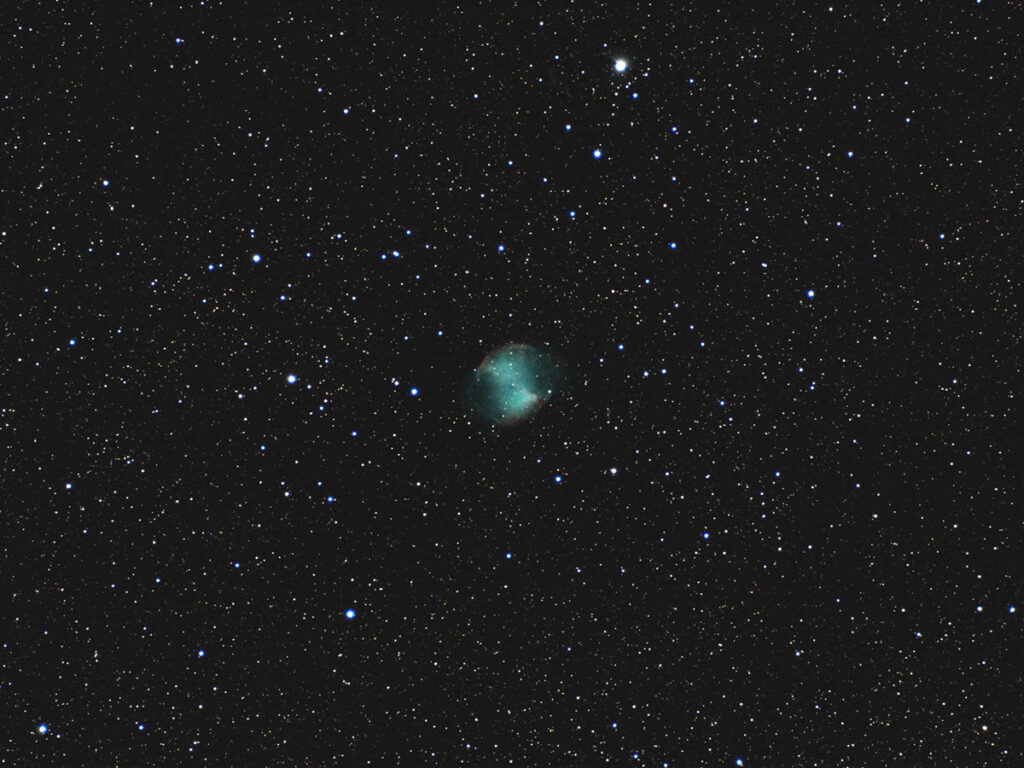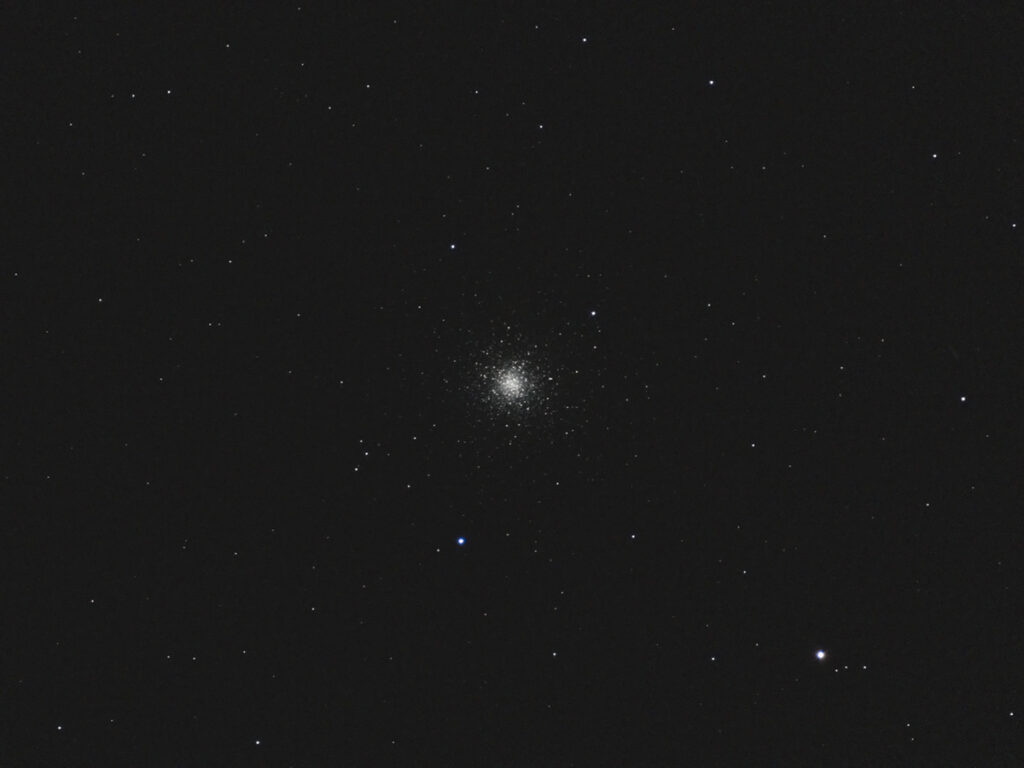
Telescope: Unitron 155 4” f/15 refractor, Atlas EQ-G
Camera: Canon EOS Ra full frame DSLR
Filter: 2” GSO IR Cut Filter
Guide scope: Orion 50mm Guidescope, ASI120MM, PHD, Dithered every 4 subs
Exposure: 17x180sec, ISO 1600, saved as RAW
Darks: Internal (Long Exposure Noise Reduction)
Flats: 32×1/10s sky flats taken at dusk
Average Light Pollution: Bortle 8, fair transparency
Lensed Sky Quality Meter: 18.5 mag/arc-sec^2
Stacking: Mean with a 1-sigma clip
White Balance: Nebulosity Automatic
Software: Backyard EOS, Deepsky Stacker, Nebulosity, Photoshop
NGC 5907, the Splinter Galaxy, is very slender edge-on spiral galaxy with a small central bulge and a pronounced dust lane. The dust lane shows some wonderful detail and gives the core a beautiful amber color. The galaxy itself is something of a giant lying 59 million light years away and 180,000 light years across.
NGC 5907 is currently well placed high in the overhead during the early evening.









Recent Comments